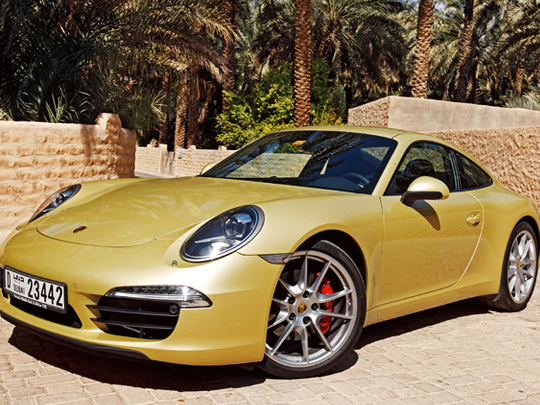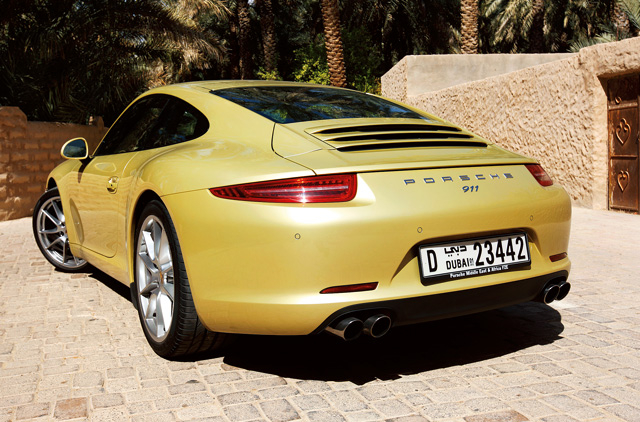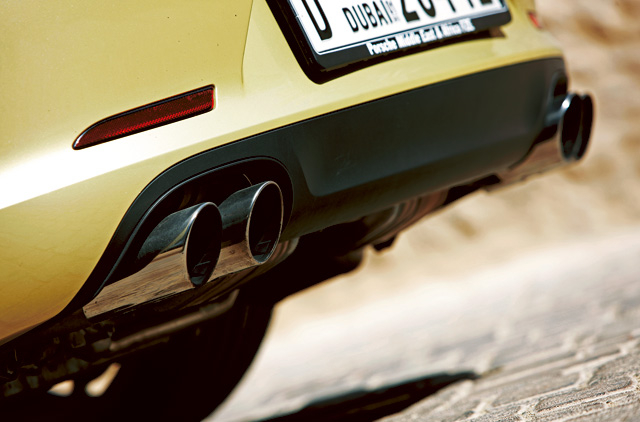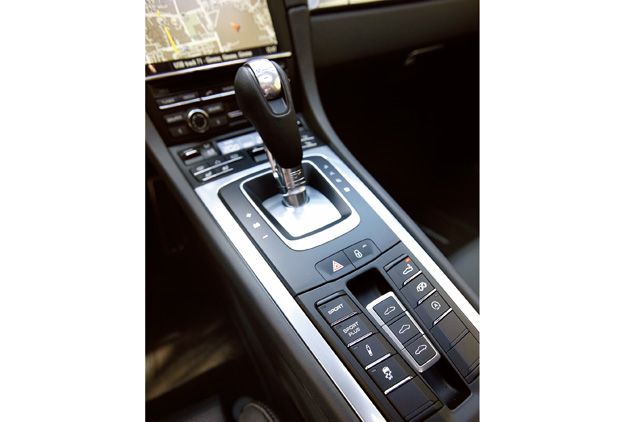
Forty years on, and the UAE is a country with a lot to be proud of. I can't think of any nation that's achieved so much growth and progress in such a short time, and I'd do some more research on this, but it's more appropriate for this story to just leave it at that.
In 1971, the country made about $20 billion (Dh73 billion), today that figure is over to $230 billion. There were few roads back then. Driving from Dubai to Abu Dhabi took hours; there wasn't a tarmac strip connecting the two cities, no petrol stations on the way, no water wells, so you were left to depend on a Land Rover by using sand tracks and following the coastline. There was also the matter of crossing borders and stopping at actual customs posts even after the country's union. Then some tarmac was laid between the two cities, but it still took four hours to make the journey one way, with no lighting, no barriers, and only camels for company. As late as the Eighties Shaikh Zayed Road was flanked by nothing. Look at us now.
Speaking of evolution, the new Porsche 911… It may be slightly older than the UAE having first been launched in 1963, but the progress and development of this iconic sportscar model closely mirrors the growth of the UAE. Things just kept getting better and better, but the roots always stayed the same, the traditional DNA could never be altered, and ancestry was everything.
This is the seventh generation 911, and the modern era has finally altered Porsche's chromosome. Today, you go to the Dubai Creek and there are few traditional buildings but many new ones. Similarly, you drive the new 911 and you get the feeling it thinks tradition means leading the pack, not always looking back.
The 911's beginnings were humble, with a 2.0-litre engine, wayward handling, and minimalist interior. Zuffenhausen's engineers repeatedly amazed even themselves, as Porsche's engines kept swelling to displace 2.2-litres, 2.7, then three, then some more, until it reached a zenith in the 4.0-litre GT3 RSR. Horsepower feverishly populated the 911 range packing every nook and cranny, culminating with the 620bhp GT2 RS; five times more than the original ‘63 model.
But somewhere along the way, the 911 has been swarmed by foreigners. Porsche isn't just a pure bred race engineering firm any more. It has a specific role to fulfil in the grand scheme of things; the VW Group. Porsche's arteries, its fuel feeds and oil lines, run on one thing, and one thing only: profit.
In the chase for cash, the superb Cayenne SUV and ungainly but excellent Panamera saloon diluted the brand's image undoubtedly, but nobody cares. More profit equals a better 911, faster development, evolution by design.
Today, the local Emiratis represent approximately a quarter of the UAE's population and the 911 amounts to about the same percentage of sales for Porsche. It's uncanny, I tell you.
In search for local tradition, and seeking a few reflective moments to muse over this new 911, we thought it would be appropriate to put the two together — this parallel of the 911 and the UAE.
We're in Al Ain, the Oasis City. Just next to us is the very house where the country's father, Shaikh Zayed Bin Sultan Al Nahyan lived.
In many ways, Al Ain is a lot like Gmünd, except that it couldn't be any less like the Alpine village in Austria that was the first true home of Porsche. Apart from the scenery though, the similarity lies in the roots of Porsche, and the birth of the UAE. This is where it all began.
Even with the redesign, which Porsche wants you to believe is thorough, there's no chance of mistaking this Carrera S for anything else. The wheelbase may be considerably longer, by 100mm, and the roofline lower, while the wheel track is wider front and rear (wider still on our S model), but with familiar upright headlights, vertical windscreen (although Porsche has raked it back significantly) and those 918 inspired taillights, this could only ever be a 911. The engine is still a flat-six displacing 3.8 litres, just like the old Carrera S, and it still mischievously sits way out back hovering over the rear axle like a grandfather clock's hand waiting to strike 12.00. And naturally at 12.00, it's time to go into a ditch.
Only, there's no such idiosyncrasies in this car. Not only is it impeccably subdued for something rear-engined, but it possess grip levels that would astonish all-wheel drive mid-engined chassis. And it's not a matter of torque vectoring, inside-wheel braking, or some ingenious electronic limited slip differential. It's just a pure, mystifying amount of chassis and tyre grip, hard wired to the driver's nerve endings in what can only be explained as humanity's greatest bio-mechanical experiment. This car plugs into your system to the extent that you start to feel strangely violated. It is a serious piece of driving kit, with all understeer instantly overpowered with a twitchy use of your right foot, and any oversteer pretty much absent in 99 per cent of driving conditions.
There are some buttons on the new Panamera/Cayenne inspired tunnel console in the middle of the cabin — sublimely put together, by the way — that firm up the suspension, the throttle response and transmission settings, as well as switch off the electronic, yet with all of them precariously glowing, the Carrera S never gets hazardous. Flashing through a corner you might find yourself in a situation, doubtlessly because of some careless throttle lift-off, where the new 911 starts ‘floating' over its weight centre, and the significantly heavier rear end then gets this daft idea to swap directions with the front. But all you have to do is open the throttle some more. Forget about sawing at the wheel, it's totally unnecessary. The 295/30 Pirelli tyres over the 20in Carrera S wheels surely deserve a lot of the praise, but most of the adulation still goes to the lengthened and therefore more stable chassis, the wider track, new rear axle and Porsche Dynamic Chassis Control active roll stabilisation system, for the first time available in the Carrera S.
With 400bhp, the engine squashes the rear tyres into the road aiding the new car to pull off 0-100kph times in the four-seconds zone, but only if you splash out on Sport Chrono Plus and the PDK double-clutch gearbox. The acceleration seems more brutal than that though, with the amount of squat and the viciousness of the PDK's launch. It's ever more impressive with the way it digs in exiting corners, using its hefty torque to spring the rev needle into action and call on the next gear.
For some reason however (actually not for ‘some' reason, it's for economy and efficiency), Porsche ditched tradition when it came to the steering department. The new power steering system is electro-mechanical, treading precariously close to ruining one of the greatest facets of all 911s. In truth, it's as weighty as ever (911s have some of the heaviest steering feels in the business), but there's an inescapable sentiment that when working the wheel, you are twisting an electric motor, rather than turning an oily cog. Do you remember the sound and kinetic resistance those little dynamos that used to power the light bulb on your bicycle made when you were a kid? It's like that. The 911's front end still springs into action almost instantaneously, but advancement in the name of efficiency here loses out to tradition.
Then there's that PDK transmission. Now in the new 911 it's been so refined I'm starting to feel it may be too refined for a sportscar with such a gruff engine, and unrelenting chassis. It belongs in a luxury car. It's impeccably smooth and even in Sport+ mode in never provides that encouraging shove in the back. You could do the right thing and order a seven-speed manual, but good luck selling it on. And don't bring up the PDK gear change buttons on the steering wheel as your counter-argument because they're irrevocably idiotic and you'll never, ever use them, if just in protest.
I still love this car, and it represents almost everything that's so impressive about modern automotive engineering; Porsche engineering. Yet, its chronic chase for progress and evolution may have been diluted with inter-family bickering, and of course, dollar signs invitingly flashing in the sky. The 911 is the perfect sportscar for the majority of us, but traditionally it used to be… well, not quite the quirky choice, but certainly an individual one.
I take my highway exit and tear through the upswept faux-suspension bridge at indecipherable-speed-per-hour effortlessly. The Meydan Racecourse looms into view. I move over for an erratic Patrol on nylon tyres, settle into a cruise and wind down the window, taking in the winter breeze.
Progress: nobody ever said it's a straight line up.
Specs
Model 911 Carrera S
Engine 3.8-litre flat-six
Transmission Seven-speed PDK, RWD
Max power 400bhp @ 7,400rpm
Max torque 440Nm @ 5,600rpm
Top speed 302kph
0-100kph 4.1sec
Price Dh470,350 (as tested)
Plus Still the quintessential sportscar...
Minus ... And diluted because of it

















